Nagaraju, Vinutha (2024) A Hybrid Approach to Enhance Drone and Bird Differentiation Using YOLOv7 and Deep Learning Classification Models. Masters thesis, Dublin, National College of Ireland.
Preview |
PDF (Master of Science)
Download (6MB) | Preview |
Preview |
PDF (Configuration Manual)
Download (2MB) | Preview |
Abstract
This research explores a hybrid approach to enhance the accuracy of distinguishing between drones and birds, leveraging the strengths of both object detection and deep learning classification models. The motivation behind this study stems from the increasing prevalence of drones which are usually referred to as UAV (Unmanned Aerial Vehicles) in various sectors like aerial photography, delivery services and surveillance. The ease of use of drones equipped with camera is causing serious privacy issues and potential security threats, as drones can be used for reconnaissance, gathering intelligence, or even facilitating attacks This highlights the need for efficient detection system, various researches have been going on in this field, the major problem faced is distinguishing drone from similar objects like birds since they look visually similar. To address this, the study aimed to determine the most effective classification model among VGG16 (Visual Geometry Group 16), ResNet18 (Residual Network 18) and InceptionV3 (Inception Version 3) and evaluate the impact of integrating it with YOLOv7 (You Only Look Once, Version 7) on overall detection accuracy.YOLOv7 achieved a mAP (Mean Average Precision) of 0.913 with F1-score of 0.8867. VGG16 was found to be the most effective model with accuracy of 98.45% with higher precision and recall rate exceeding 90%. A hybrid pipeline was developed where YOLOv7 detects the object, and the Region of Interest (ROI) is classified by VGG16. However, the proposed method, with an accuracy of 90.38% on the test dataset, did not consistently outperform YOLOv7 alone and sometimes misclassified drones as birds. These results highlight the potential of combining detection and classification models but also indicate the need for more adaptive and iterative approaches.
| Item Type: | Thesis (Masters) |
|---|---|
| Supervisors: | Name Email Niculescu, Hamilton UNSPECIFIED |
| Subjects: | Q Science > QA Mathematics > Electronic computers. Computer science T Technology > T Technology (General) > Information Technology > Electronic computers. Computer science Q Science > Q Science (General) > Self-organizing systems. Conscious automata > Machine learning |
| Divisions: | School of Computing > Master of Science in Data Analytics |
| Depositing User: | Ciara O'Brien |
| Date Deposited: | 21 Aug 2025 09:42 |
| Last Modified: | 21 Aug 2025 09:42 |
| URI: | https://norma.ncirl.ie/id/eprint/8596 |
Actions (login required)
 |
View Item |

 Tools
Tools Tools
Tools